Part 7: 500-520 YE-Life in the Machine
Life in the Machine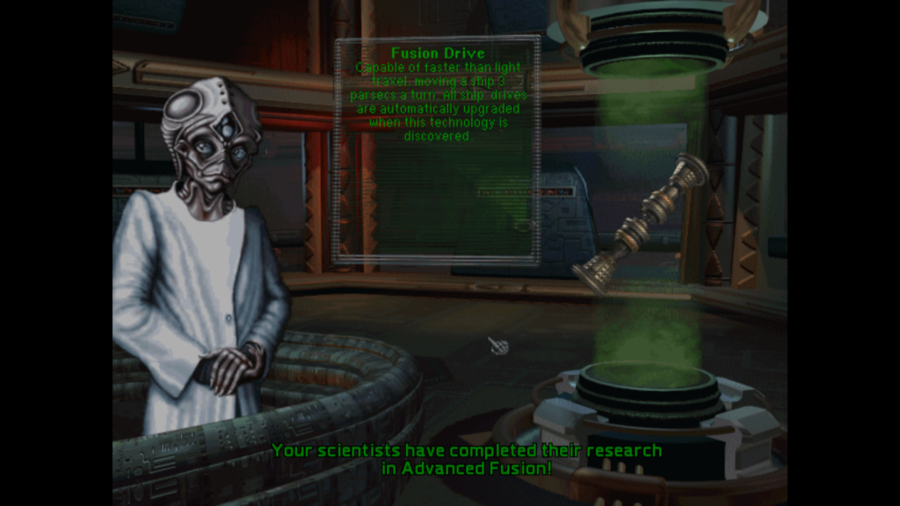
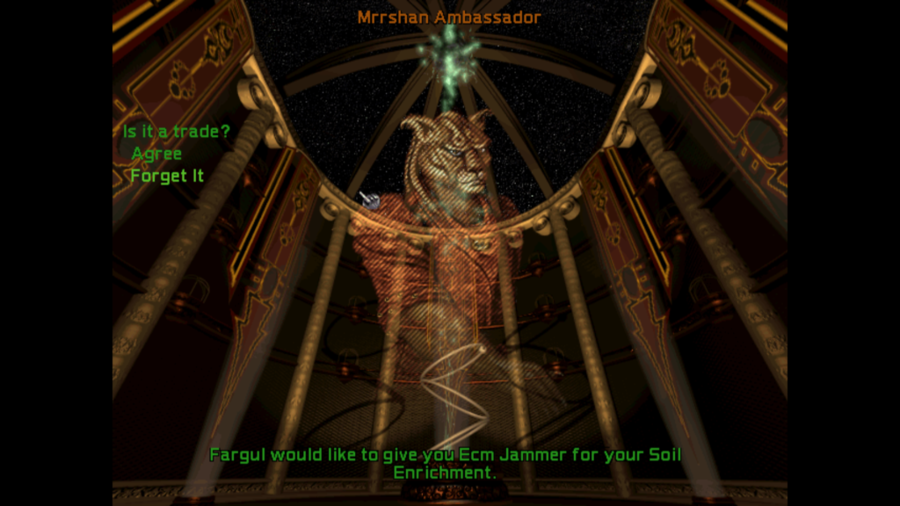
In 501, Sedos Voidcraft Drive Systems reported the development of a new line of FTL drives capable of taking advantage of the massive power output of modern fusion drives. At slower-than-light speeds, the new technology would help improve acceleration and maneuverability, but at faster-than-light speeds, the improved power output of the drives should allow for no less than a 50% improvement in travel speeds. Improved travel speeds cut down the time needed for travel and trade, helping knit Narestan civilisation more tightly together across its sprawling breadth, and helping make the Mrrshan somewhat less inaccessible.
Only the following year, the board of the diplomatic consortium worked as go-betweens for negotiations that ended in Mrrshan defense industries transferring plans for advanced electronic warfare suites to Narestan shipbuilders, Narestan agricultural firms sending information and experts to help with training necessary to deploy genetically-engineered fertilisation microorganisms in the Interstellar Union, while Narestan shipbuilding firms arranged to make financial compensation to the agricultural firms involved in the deal. Some analysts expressed hopes that improved agricultural productivity in the Interstellar Union might eventually result in enough economic growth to improve the Union's position as a trade partner.


The systems of Esper and Yhe were explored in that same year of 502. Although Esper was a brown dwarf with no bodies of particular note orbiting it, Yhe possessed a pair of potentially-colonisable planets, one which was notable for immense lodes of heavy metals a short distance under the planetary surface. Yhe II, shortly after dubbed 'Renar', even had bare lodes of metallic tungsten and iron thrusting above the surface in multiple places.
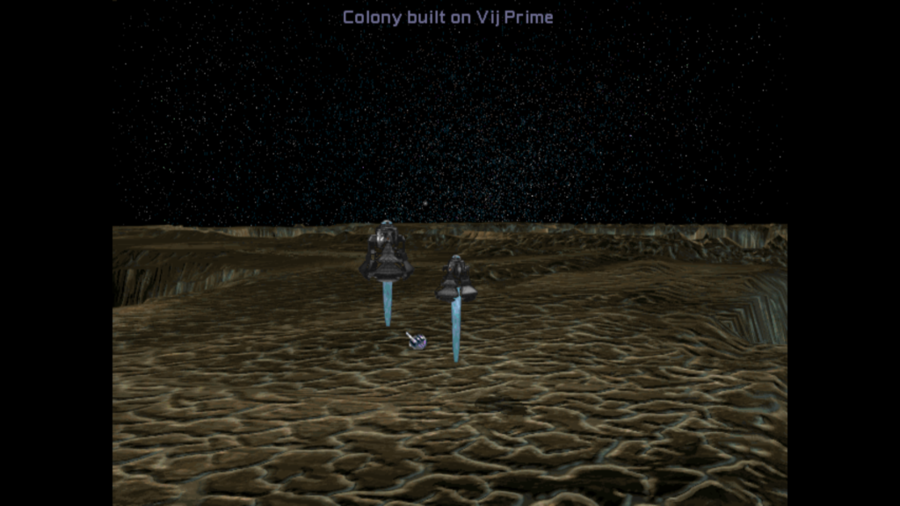
The colony at Sadesal had, for a number of years, served as a port of call for settlers establishing themselves on the first planet of the Vij system, Tanan, and by 506 the population on Tanan had passed a billion, forming a stable, economically-viable population. Investment capital promptly flowed into Tanan's young industries, helping establish the local economy more firmly within its first few years of existence.


Continued contact with the Interstellar Union and study sponsored by the Consortium for Xenogovernmental Negotiations and various companies marketing to Mrrshan clients eventually resulted in the development of a systematic, scientific study of Mrrshan psychology as it differed from Narestan psychology, with expert xenopsychologists on staff in diplomatic and marketing departments. Using the insight provided by these new advisors and the existing history of friendly trade between Narestan civilisation and the Mrrshan, the Consortium for Xenogovernmental Negotiations succeeded in writing up a treaty that was accepted by the Interstellar Union, confirming that the Interstellar Union would not engage in wars against Narestan population centers as long as Narestans refrained from threatening the Interstellar Union.
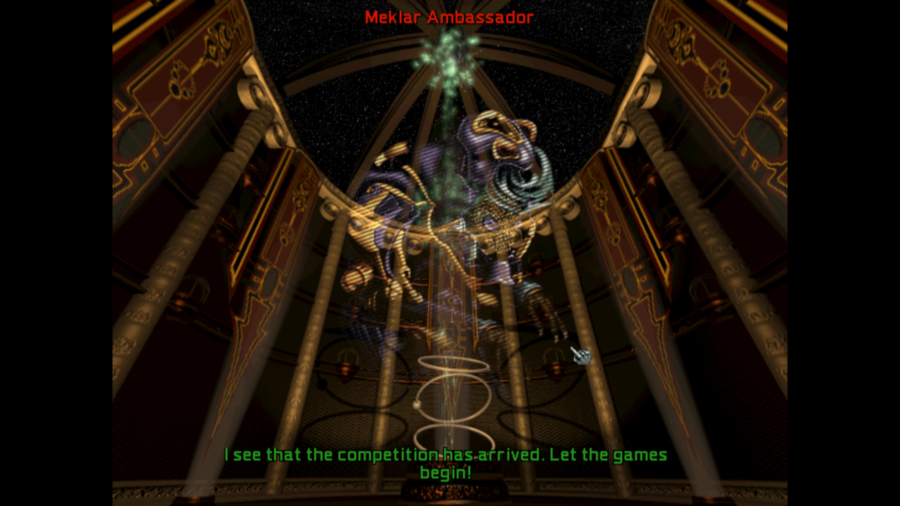
In 493, the Narestan colonists in the Vij system found themselves contacted through the short hyperspace path between Vij and Ktynga by scouts of another starfaring species, the Meklars, themselves unified under an authoritarian bureaucratic state under an Autarch. The Consortium for Xenogovernmental Negotiations found itself expanding its operations from dealing solely with the Interstellar Union to also handling negotiations with the government of the Autarchy, helping provide some layer of representation comfortable for foreign governments to negotiate with.
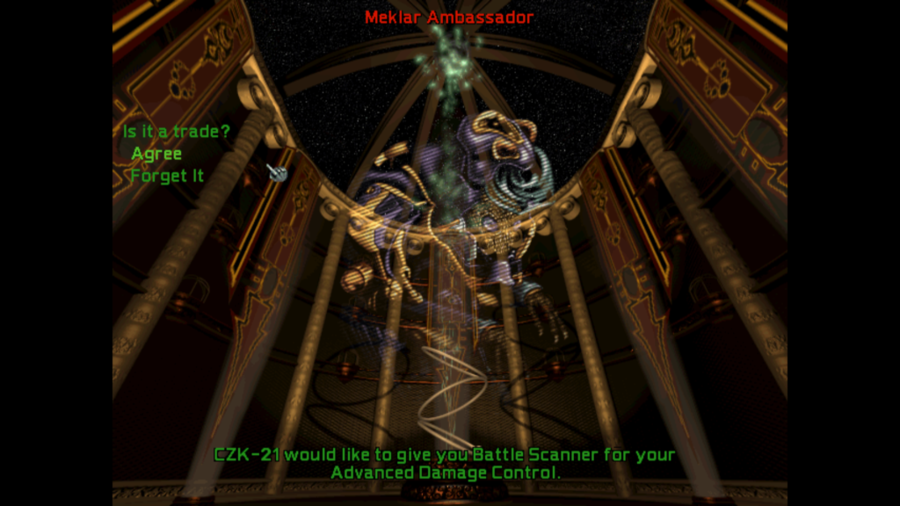
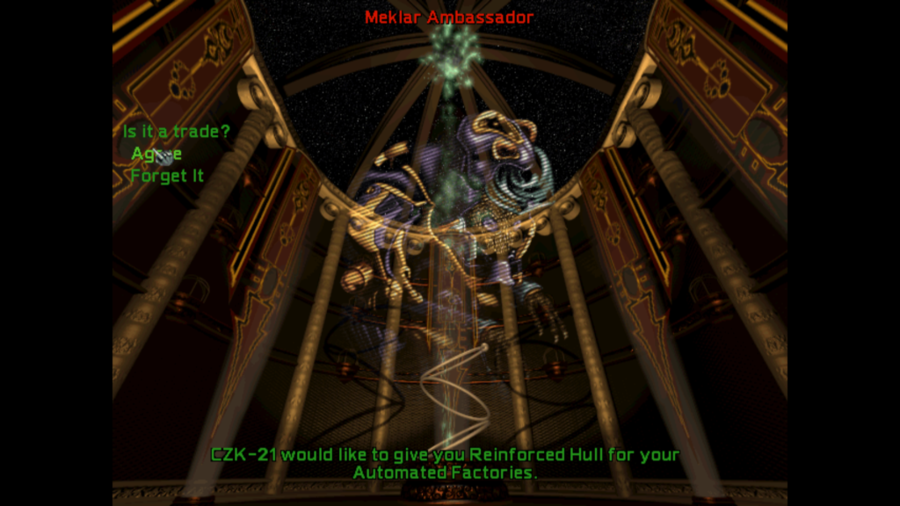


Early negotiations with the Meklars resulted in the Autarchy permitting trade and traffic across the borders of the Autarchy, and approving cooperation agreements between researchers and scientists in the two civilisations. Meklar equipment for improved redundancy and reinforcement in ship design and expanded, high-powered scanning arrays that could have application both in long-range information gathering and in tracking movements of nearby targets in realtime were made available to Narestan firms, in exchange for certain Narestan advancements in industrial processes and shipbuilding.
Advanced Damage Control, amusingly, doesn't actually do anything for the Meklars- they repair any damage they take after battle anyhow.
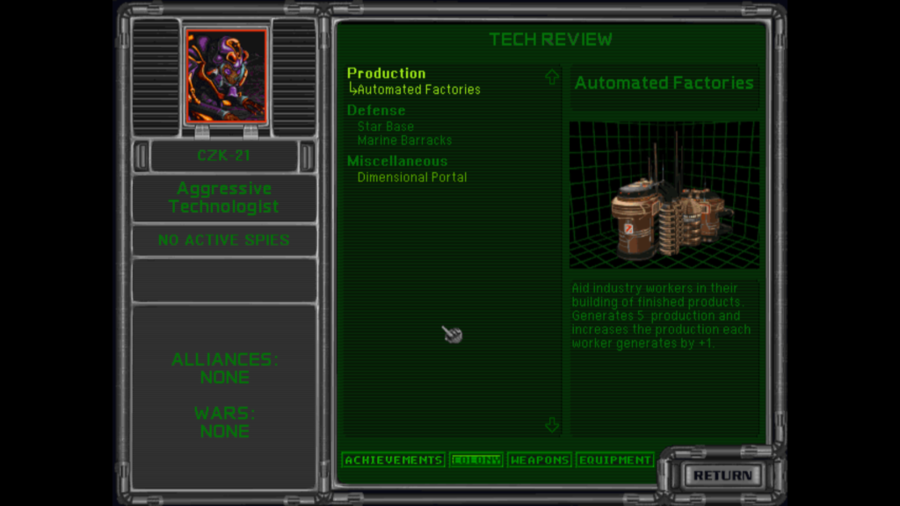
The Meklars are an invertebrate species, naturally both weak and possessing fragile constitutions highly vulnerable to life-threatening cancers. As they finally entered their industrial era, their technological advancement began focusing heavily on prosthetic organ implants that could sustain Meklar life even after organ failures and limb replacements, which helped drive the development of viable cybernetic interfaces for Meklar very early in their technological cycle. Armored cybernetic exoskeletons that protected Meklar against external hazards and boosted their strength grew increasingly more widespread, while many Meklars continued on permanent life support, many of their organs scooped out and replaced with mechanical implants. The Autarchy is descended from a quasi-religious ideology that arose holding that cybernetic augmentation was not only a pragmatic adaptation, but a transformative evolution of Meklar nature that should be aggressively spread to the whole species, which eventually overcame other nation-states that either rejected this ideology, or, in the most reactionary cases, rejected cybernetics altogether.
The modern Autarchy is a ruthlessly pragmatic state that combines ideological education across the population and unquestioned authority centralised in the Autarch with a deliberate policy of academic freedom for researchers and pragmatic allowances for certain amounts of personal and economic freedoms for the general populace so long as they do not threaten the Autarch's authority or the official ideology. Meklar industrial workers can be surprisingly effective, adapting their exoskeletons to specific industrial tasks, while Meklar agricultural needs are sharply curtained given the deliberate policy of replacing many internal organs with artificial life support. Modern Meklar personal naming deliberately takes a mechanical pattern, reflective of their 'advanced', 'evolved' nature.
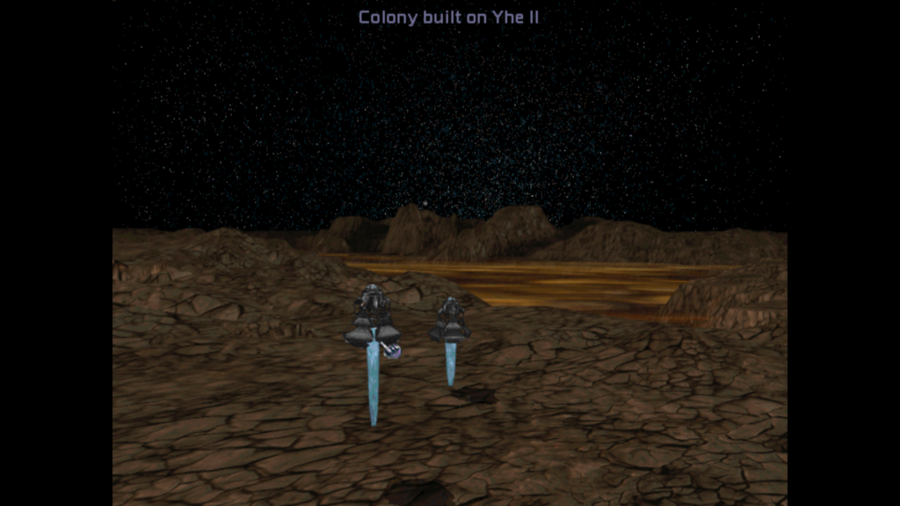
Two years after the Meklar contact, a colonisation mission to Renar established a new colony on the barren world. Mining operations promptly started, processing the immense mineral wealth of the planet into equipment needed to establish a thriving colony, even as investment capital from other planets in the civilisation began flowing into Renar. The world began developing rapidly.
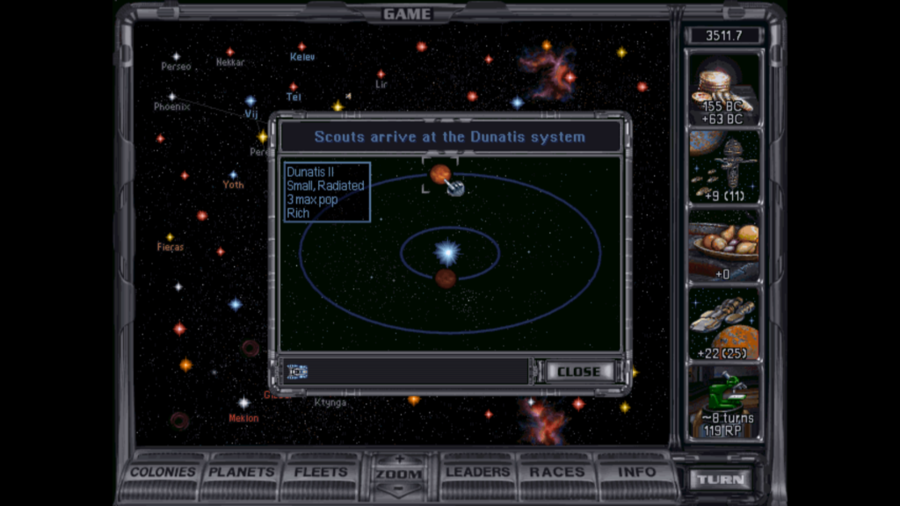
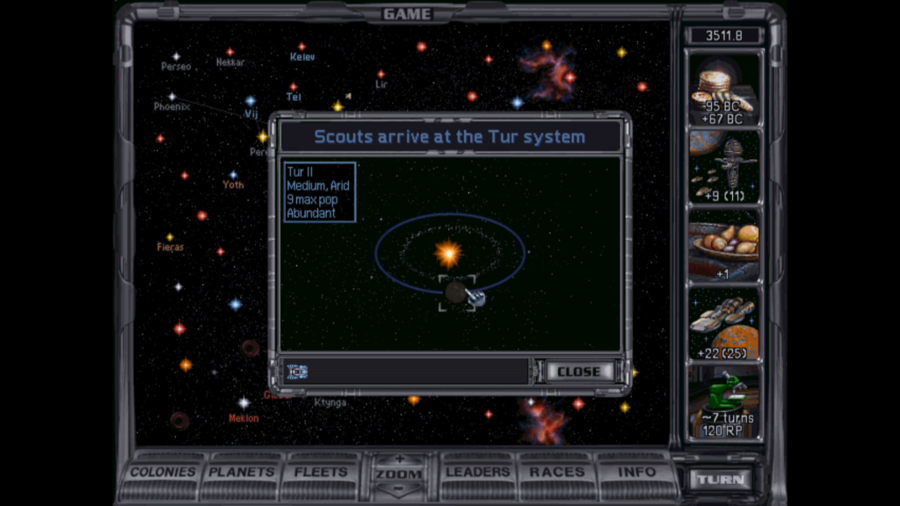
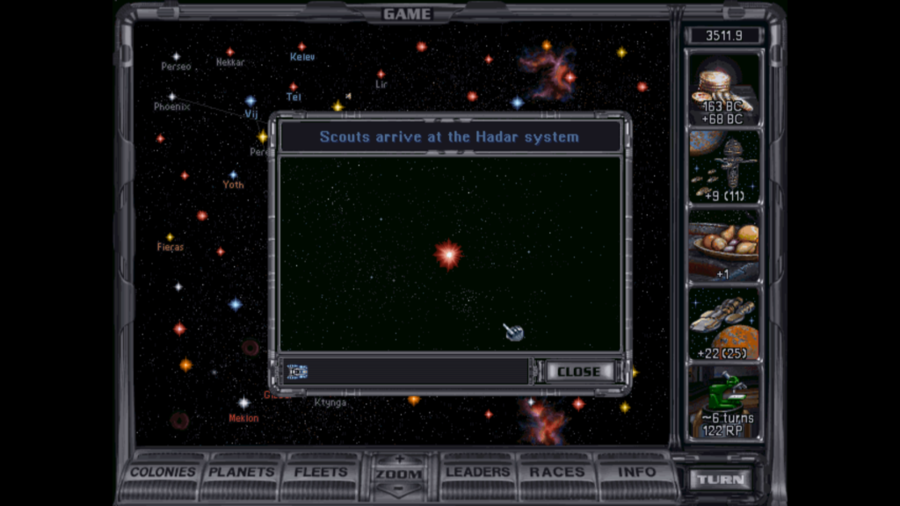


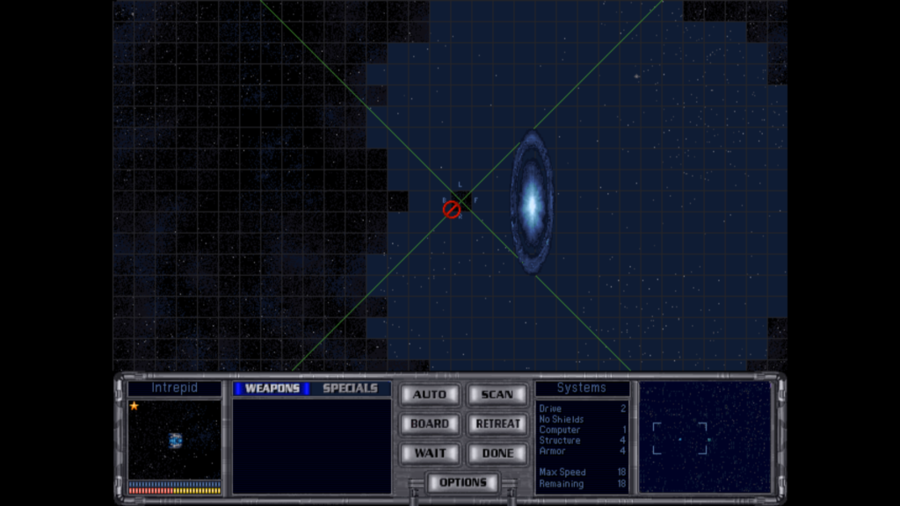

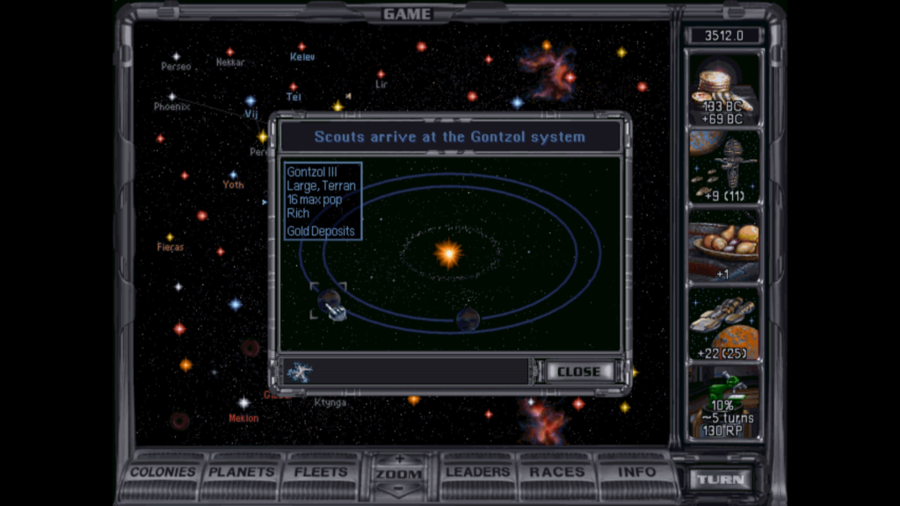
The years from 515 to 520 saw the Intrepid and Venturer continuing out to further chart the unknown, with four more systems surveyed and catalogued. Gontzol, surveyed in 520, proved to be home to a bizarre crystalline organism that attempted to fling an artificially-induced microsingularity at the Intrepid. The Intrepid, fortunately, avoided the first attack even as the microsingularity decayed into an enormous burst of Hawking radiation, and charged up its FTL systems for an emergency jump into hyperspace back to Narestan space. It seemed likely that Gontzol would not be accessible to the Narestans for some time, despite the evident riches of the system in lush biosystems and mineral wealth.

Meanwhile, the Consortium for Xenogovernmental Negotiations had finished the needed negotiations to establish a hopefully permanent peace between the Autarchy and Narestan civilisation. Hopes were high that trade would continue to benefit both Narestan and Meklar civilisations into the future.
Narestan Civilisation as of 520

The population of Nares has stabilised at approximately sixteen billion, with birth rates dropped to nearly match death rates. What population growth does exist is largely absorbed by emigrants signing on for new colonisation missions to further worlds. A rigorous focus on efficiency in Nares' agricultural sector has seen agricultural employment continue to drop over the past twenty years, now standing at only approximately 200 million. The solid prosperity of the planet makes it the richest in all known space, and an immense center of innovation, invention, and scientific endeavor.
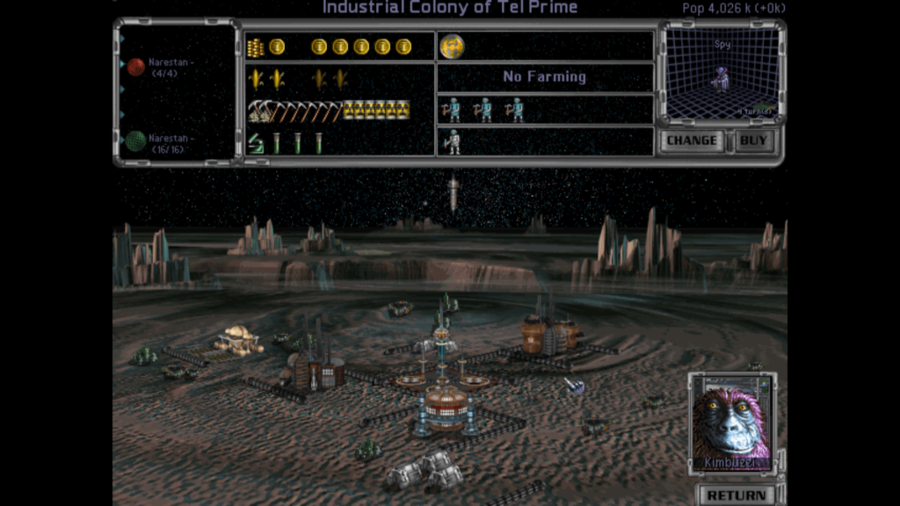
Sedal, like Nares, has a population stabilised, this time at approximately four billion. What population growth it has fuels a slow stream of emigrants that enlist for new colonisation programs. Despite the expenses of survival in the harsh irradiated environment of Sedal, the planet is solidly prosperous, and now serves as the headquarters for several security contracting firms helping provide services to protect the physical and intellectual property of other firms.

Sadesal's population now exceeds three billion, with a notable and active research community and a local shipyard and defensive station nearly completed. Sadesal is a firm linchpin of trade between Narestan worlds, and an important stopover for Mrrshan and Meklar traders to Narestan worlds, the gateway for many exotic goods.

Tanan, although it has completed a major spaceport complex, is as of yet only a minor contributor by value to interplanetary trade, although its agricultural surpluses ensure that Sadesal remains fed. Its industrial base is being steadily built up, while relying heavily on imports from other worlds with sufficiently large economies to maintain the necessary specialty industries to maintain complex modern infrastructure.
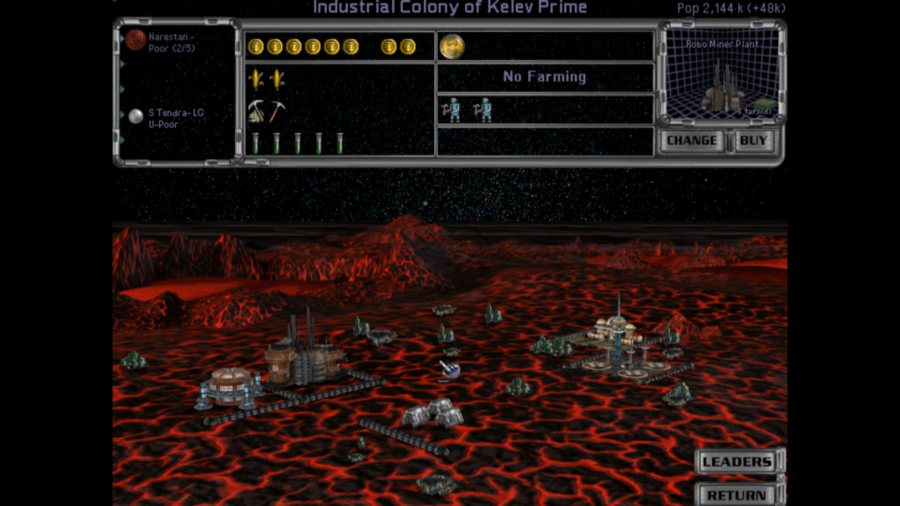
Talesen's growing population has helped develop local specialty industries sufficient to maintain its infrastructure, while still trading valuable equipment and goods to other planets. Local hydroponic agriculture can still support the whole population, but agricultural exports have now largely evaporated. Local industry is not up to the first tier of productivity seen in older Narestan worlds, but factory modernisation and increased installation of robotics in its mines is well under way.
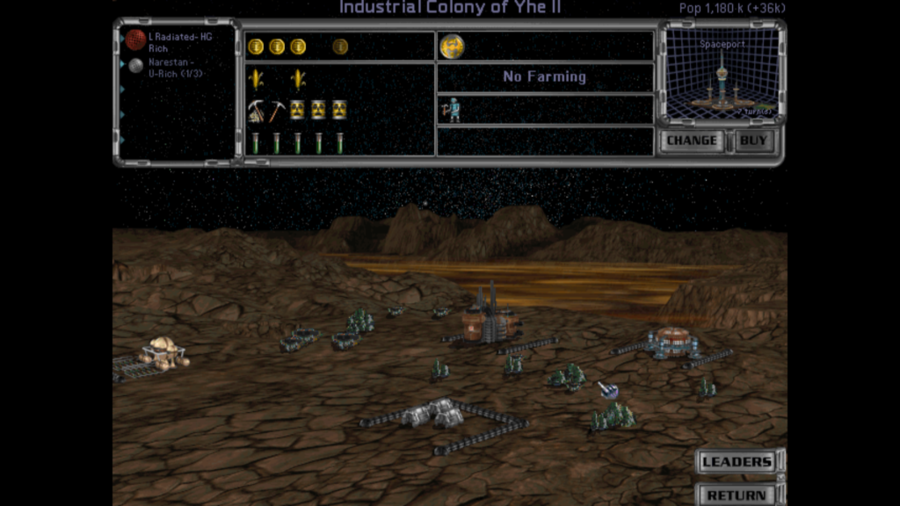
Renar maintains a respectable, if basic, infrastructure of local industry, hydroponic agricultural industries, and high-tech industries and basic scientific gathering. The incredibly rich metals deposits here have speeded the productivity of the factories on the surface, helping rapidly assemble spaceport facilities on the planet. Despite its evident bright future, Renar's still-small population demands reliance on the more-established industries of planets further in Narestan territory.

Commerce with the Mrrshan and Meklar species and collaboration with their researchers has provided steadily-growing benefits to Narestan consumers, importers, and exporters, although concerns about the security of corporate property in the presence of their governments has led to the slow growth of a disjointed array of corporate internal security protocols and contractors hoping to safeguard against potential theft. Although this is a significant expense, nonetheless this expense is swamped by the profits of trade beyond Narestan territory.
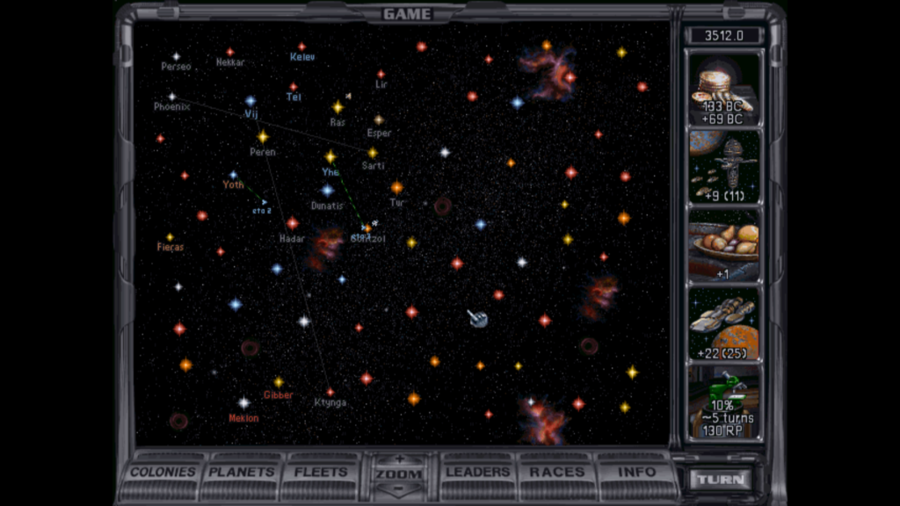
Growing populations, trade, and development have led to a growing Narestan economy, with a significant flow of investment capital every year and a massive growth in innovation over the past twenty years. Economic studies and refinement of business methods continues year after year, and is likely to have incredibly dramatic effects on the Narestan economy before long.
Investment Proposals
Research Priorities
Breakthroughs in economics are likely help free up capital for other projects in the very near future. Improvements in materials science and industrial waste processing are favored by many heavy industrial concerns, while consumer optronics firms see immense profits in pushing the bounds of consumer hardware even further. Some scientists and research departments, for their part, prefer to focus on developments in optronics focused on massive scientific supercomputers to handle large-data problems of the sort they routinely tackle.
Please vote on Materials Science and Chemistry, Consumer Optronics, or Scientific Optronics for investment. Vote also on more immediate developments in optronics, between high-precision exploratory instruments and improved security technologies available through refinements of current optronic technology.
Meklar Research Data
It is believed that Meklar weapons manufacturers have developed powerful and effective kinetic weapons for space-based use, likely to outperform many other direct-fire weapons that could be developed in the future and likely to be a highly effective weapon system if adapted for attack boats. Improved economic sciences and business methods derived from them may well prove to be sufficient to arrange for this technology to be released to Narestan firms.
Please vote on whether to trade our upcoming Planetary Stock Exchanges for Mass Drivers from the Meklars.
Colonisation Priorities
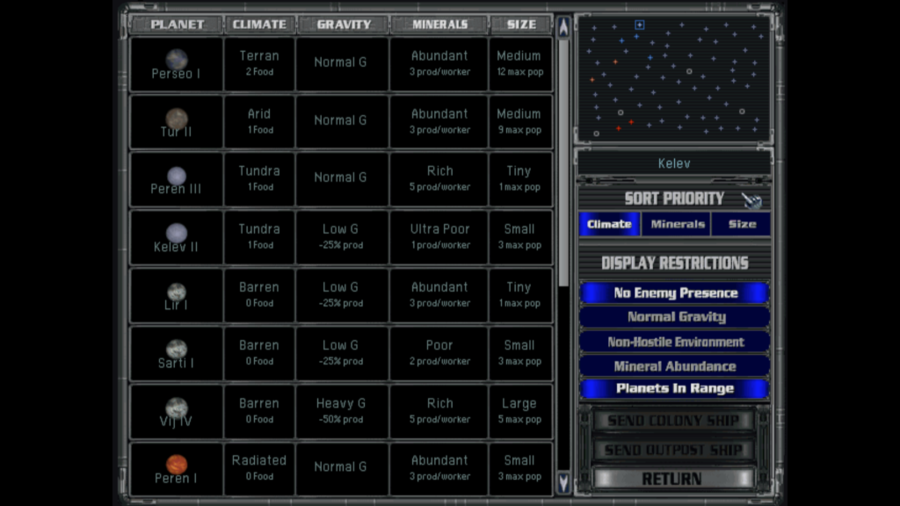
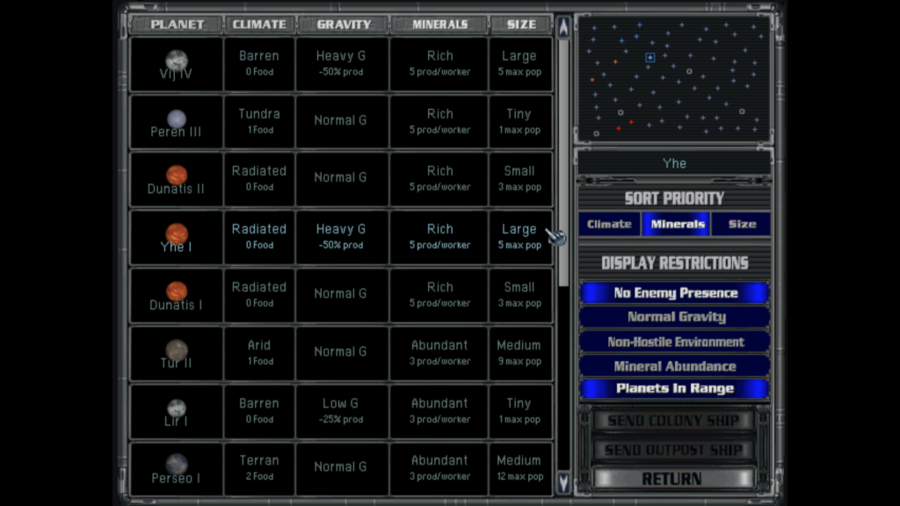
The two radiation-blasted but metals-rich worlds of the Dunatis system, the lush and Nares-like planet in the Perseo system, and a planet with relatively small oceans and limited rainfall supporting a stable, if water-poor, biosystem around Tur are the most immediately appealing targets for future colonisation. Funds raised for new settlement slowly shape which way the next colonisation mission shall go.
Please vote on the next planet to colonise.
Security and Shipbuilding
Some security contractors believe that establishing an effective space-based presence to respond to potential threats could enhance their value. Many of these look to Renar as an eventual headquarters, given that it is likely to be able to easily support a powerful shipbuilding industry, but establishing temporary security shipbuilding programs around Sadesal may allow for earlier establishment of response forces.
Please vote on whether to start shipbuilding on combat-ready ships soon, or to wait until we get our industrial superworld up and running.
The Narestan people steadily spread across the stars, driven by their vigorous economy and eagerness to exploit the stars, enjoying the fruits of growing trade with strange cultures. It seems, on balance, to be a fine time for the Narestan species.